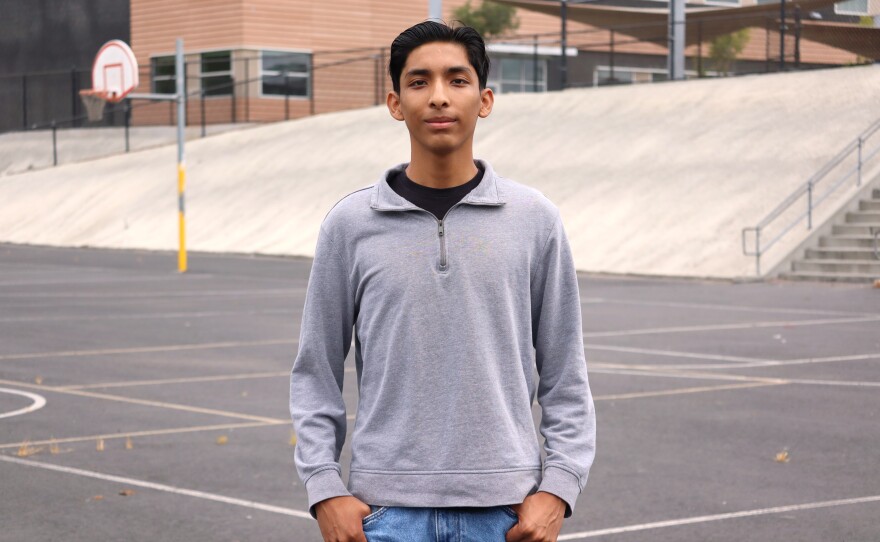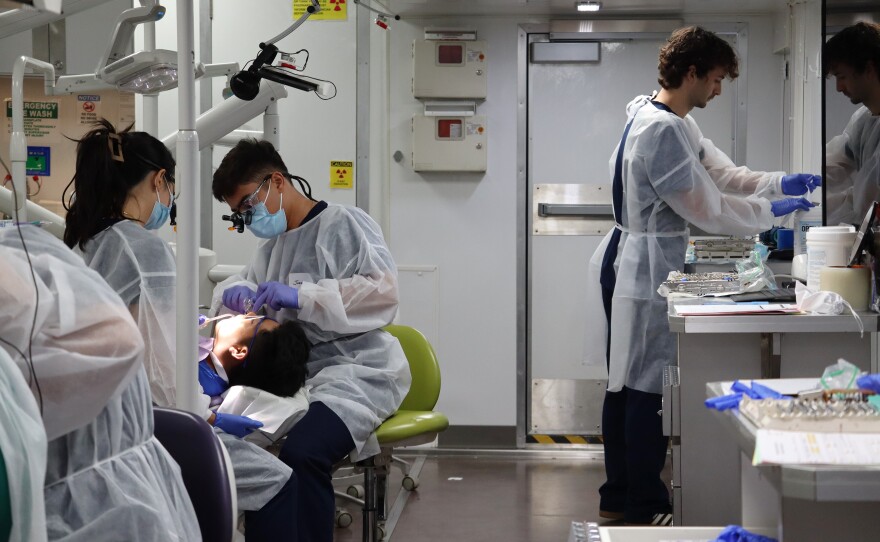Adriel Bibiano was in eighth grade when his dad, a farmworker, had to take on a second job. His mom was in Mexico, and COVID-19 had caused officials to close the border.
“We had to really learn how to take care of ourselves during that time. I had to learn how to wash clothes, cook. I had to pick up my little brother from school,” he said. “It was just a lot for someone to take on.”
The Migrant Education Program offers extra help with math and English, counseling about college and career options and education for parents about the school system. It also helps families like his access health care, food, housing and other services.
“My parents didn't have the opportunity to learn English or even go to school,” Bibiano said. “My little brother and I really relied on the Migrant Education Program to teach us the foundational skills on how to be successful in school.”

The federal program dates back to the 1960s, and California’s Migrant Education Program is the largest in the country. One in three migrant students in the U.S. live in California, according to the California Department of Education.
Their parents work in the agriculture, dairy, fishing and lumber industries and move to find seasonal jobs. That movement can disrupt kids’ education and health care, said Elisa Ayala, who directs the Migrant Education Program at the San Diego County Office of Education.
“Without the afterschool programs that we provide, without the access to mental health or facilitating some of these health services, what I envision in my mind are children sitting at school who are really not doing well, and not thriving, and therefore not learning,” she said. “And I think that's absolutely heartbreaking.”

Last month, the Trump administration said it was waiting to disburse Migration Education funds — and funds for several other federal education programs — while the White House Office of Management and Budget reviewed them. California and more than 20 other states sued over the move.
On Friday, the Department of Education told NPR that it would release the funds to states this week.
The San Diego County Office of Education is waiting on more than $5 million in Migrant Education funding. The program serves about 3,000 students in San Diego and Orange Counties.
The office identified enough funding to keep Migrant Education services running through July, but not much longer, Ayala said.
“While I definitely count on my superintendent and our board to keep going what they can, it's not going to be possible without having these funds released,” Ayala said. “And we don't want to see our children hungry, or tired, or exhausted or not learning.”
Bibiano is headed to Stanford University this fall, where he plans to study economics and international relations. He credits the Migrant Education program for keeping him on a path to success.
“Children without their parents can be very unpredictable,” he said. “It can really change the track of where they go in life. Luckily for me, the Migrant Education Program was one that guided me down a really good path.”






